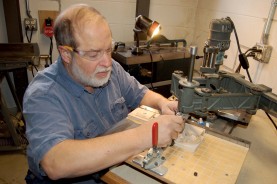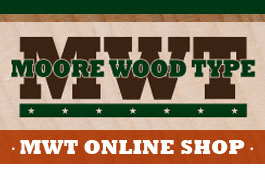Lost, Duplicate, and Injured Wood Type
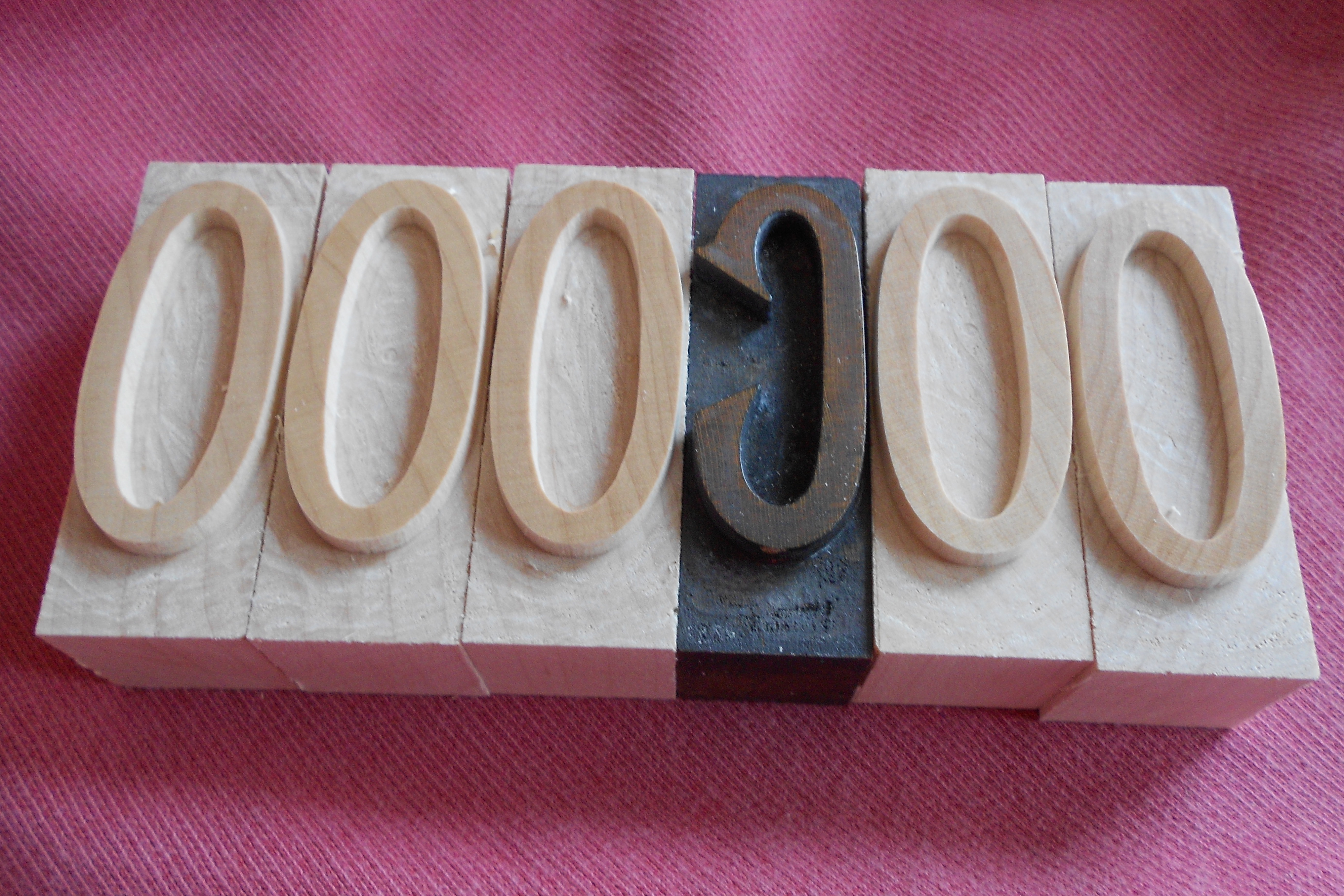
When I tell people I make new wood type for printing presses most of them admit they have no idea what that means. I’ve started carrying a sample letter around in my pocket to help explain.
When I tell letterpress printers I make new wood type, usually the first question from them is, “I’m missing an upper case ‘K’ from a nice font of Tuscan wood type. Can you make me some replacement letters?”
or…
“I have a beautiful 4A font of French Clarendon, but it only has one ‘E.’ Can you make me some duplicate E’s so I can spell more than just a few words?”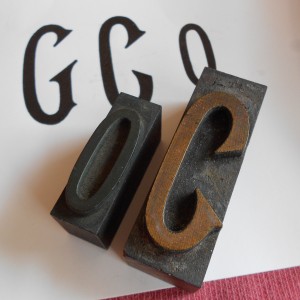
or…
“I just bought a full font of wood type on E-bay, but now that I have it I see that there are 4 letters that are crushed or badly scratched. Can you repair the damage or make me new letters from the ones with the damage?”
or the worst question I have had so far…
”I just bought some old wood type, but it has been under water at some point and a few of the letters have had the corners chewed off by mice. Can you make me replacement letters and bring it back to type high?”
The answer to all of these questions is Yes. I have been working on developing the skills and knowledge to be able to do some of this work. I am still working on the price to charge, and the best way to gather the information I need to make new letters to match existing type.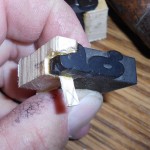
My daughter, Erin, presented me with a recent order for new 15 line uppercase O’s to allow one of her students at Miami University to complete a project in their Curmudgeon Press Shop. It is one of the beautiful Page fonts from their collection but all of the O’s were missing. Erin and I have been discussing the process of making missing letters so she brought me the uppercase 15 line “C,” a smaller 8 line “O” from a matching font, and provided nice clean proofs.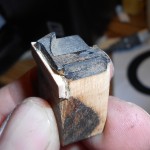
A digital micrometer and the C showed me that the actual printing face was only 11 1/2 picas tall. Having a piece of the actual type also provided the measurements for the shoulders and the location of the baseline and position of the letter on the wood base.
I decided to make a pattern from wood because I was making her 5 copies of the same letter. 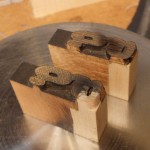 By experimenting with different size cutters and tracers, I finally made a perfect one with the proper “Heft” or stoke thickness. 20 minutes later I had five new uppercase O’s ready to ship to Oxford, Ohio. I only ruined six other pieces of maple in the process.
By experimenting with different size cutters and tracers, I finally made a perfect one with the proper “Heft” or stoke thickness. 20 minutes later I had five new uppercase O’s ready to ship to Oxford, Ohio. I only ruined six other pieces of maple in the process.


